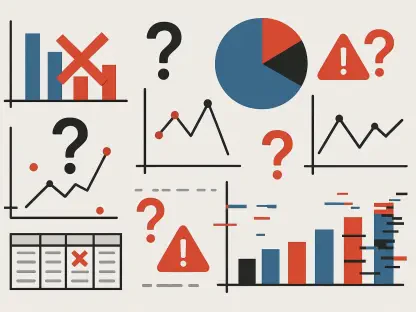Artificial intelligence has significantly transformed many industries, but when it comes to text-to-image generation, choosing the right model can be challenging. Recraft V3’s Red Panda has emerged as a leader in this field, but how does it compare to other models like DALLE 3, Midjourney v6, Stable Diffusion 3, and FLUX 1.1 [pro]? This comparison examines the strengths and weaknesses of these AI models from various aspects clearly.
Key Features
Red Panda offers several unique features that set it apart in the realm of AI image generation. The model’s ability to generate images of any size, even when given long texts, is a significant advantage. Few other models can manage extensive texts without compromising quality. Moreover, Red Panda has demonstrated a high Arena Win Rate of 72 percent and an Elo score of 1172, a clear indicator of its superior performance. The model allows designers to exercise enhanced control, ensuring the final output is closely aligned with their creative vision.
In comparison, DALLE 3 stands out for its creative capabilities. It can generate imaginative and artistic images, offering a range of styles that appeal to a wide audience. However, DALLE 3 does not match Red Panda’s proficiency in handling longer texts. Midjourney v6 is praised for its realistic image outputs, but it lacks the finesse in generating detailed images with extensive text prompts. Stable Diffusion 3 also offers realistic results, but shares a similar drawback when dealing with lengthy text inputs. FLUX 1.1 [pro], while powerful in various aspects, falls short in exact control and sometimes deviates from the given prompts.
User Experience
Red Panda’s approach includes a crowd-sourced ranking system within the Text-to-Image Arena, where users evaluate images generated by different AI models. This interactive platform allows users to vote on the best images without knowing which model created them, fostering an unbiased selection process. This system enables users to understand each model’s capabilities and provides Red Panda the opportunity to prove its worth. Such a system ensures that the generated images adhere to quality standards and lack artifacts.
On the other hand, DALLE 3, Midjourney v6, Stable Diffusion 3, and FLUX 1.1 [pro] also have their platforms for user interaction but do not employ a similar comprehensive ranking mechanism. This makes it harder for users to compare the outputs directly. Consequently, evaluating their usability and overall performance becomes subjective and often based on individual preferences rather than a community consensus.
Creative Control
When it comes to creative control, Red Panda shines. Anna Veronika Dorogush, the founder and CEO of Recraft, highlights that the goal is to provide designers with enhanced control over their work, allowing for precise results according to their creative vision. This commitment ensures designers can rely on Red Panda as a crucial day-to-day tool.
In contrast, while DALLE 3 and Midjourney v6 also offer control over image generation, they sometimes require more manual adjustments to meet exact user expectations. Similarly, Stable Diffusion 3 and FLUX 1.1 [pro] provide tools for customization, but the extent of control can be limited compared to the flexibility offered by Red Panda. The predictability and reliability of Red Panda’s outputs give it a significant edge for designers looking for consistent high-quality work.
Conclusion
In 2024, the progression in AI text-to-image generation saw Red Panda setting new benchmarks. Its ability to handle extensive texts and produce high-quality, versatile images has made it a preferred choice among creative professionals. By highlighting the varying strengths and weaknesses of each model, it becomes evident that while DALLE 3, Midjourney v6, Stable Diffusion 3, and FLUX 1.1 [pro] each have their merits, Red Panda provides unmatched control and adaptability.
Future developments should focus on enhancing user interaction platforms, drawing from Red Panda’s crowd-sourced rating system to ensure improved, unbiased evaluations. By continuing to advance AI models and user interfaces, the realm of text-to-image AI holds tremendous potential for even greater innovation and creative freedom.









